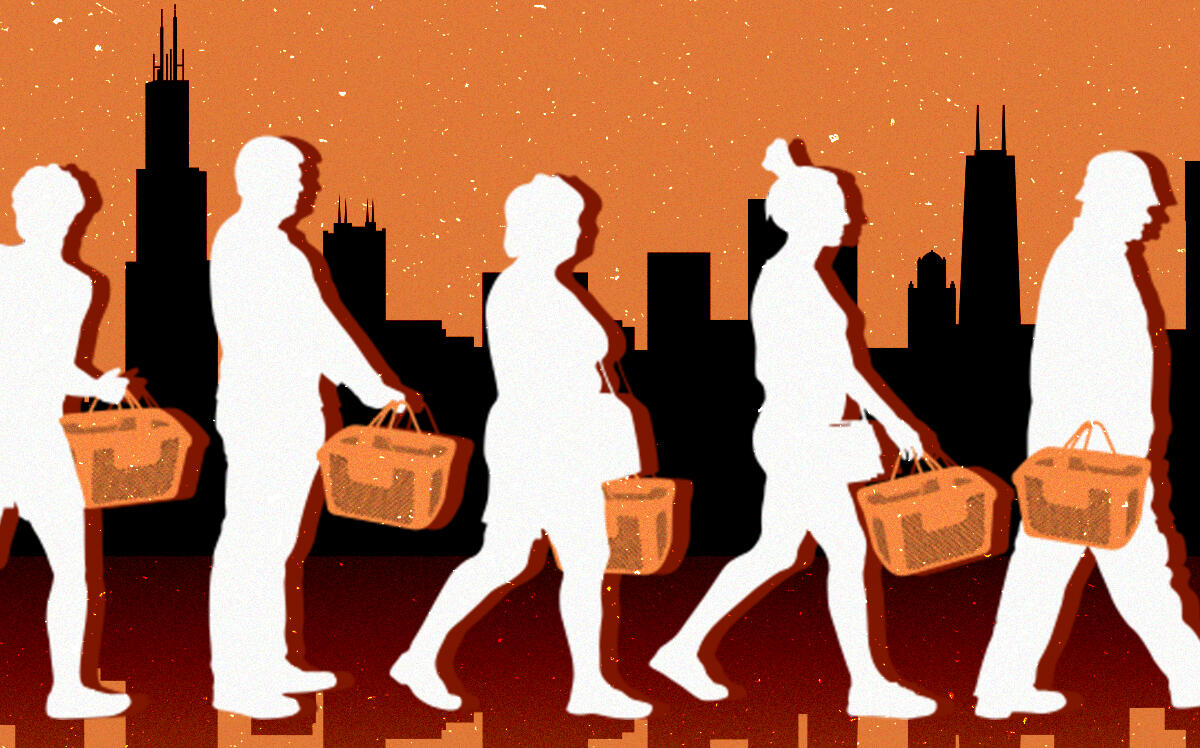Buyers are jumping into Chicago’s retail market at the fastest pace in decades as its suburbs lead the charge into recovery from the pandemic.
In the year ending in March, there were 70 percent more retail property trades in the Chicago area than in the prior 12 months. The increase resulted in the most sales of retail properties for $1 million or more in the Chicago metro during the period than in any year since at least 2000, according to brokerage Marcus & Millichap.
The total number of transactions during the span was about 830, representing about $3.5 billion in volume, the brokerage reported.
“Our phone is probably ringing more than ever with buyers looking to buy product,” said Austin Weisenbeck, a co-leader of Marcus & Millichap’s Sharko, Weisenbeck, Mendoza Group, which represents sellers throughout the midwest and focuses on the Chicago area.
Despite the bounce back from the pandemic getting underway, prominent downtown shopping strips are lagging behind the suburbs. River North, the Loop and portions of the Mag Mile have struggled with smaller work week crowds and muted foreign tourism. Rising interest rates are another headwind.
Chicago’s collar counties have especially seen a pickup in interest compared to the more urban Cook County, Weisenbeck said. That’s partly because Cook County landlords had less flexibility to make concessions to tenants or lower rents when faced with vacancies amid the pandemic because of higher overhead on costs like property taxes than owners in more distant suburbs.
Net absorption surpassed 3.3 million square feet in suburban Chicago last year, and vacancies in the suburbs dropped 20 basis points below pre-pandemic levels, Marcus & Millichap found. Suburbs in the Central Northwest submarket recorded the strongest net absorption and posted vacancy 200 basis points below the Chicago suburban average in the first quarter of 2022. A basis point is 1/100th of a percentage point.
One positive sign last quarter was e-commerce company Wayfair deciding to open a flagship store in the Eden’s Plaza shopping center in Wilmette, which was just bought for $110 million by WS Development. That deal illustrates both the strength of the suburbs and the growing potential for online retail platforms to complement rather than compete with the brick and mortar model.
“We’ve seen tremendous demand for shopping centers and retail product overall,” Mid-America Real Estate’s Ben Wineman said in an interview. He just represented the longtime owner of two suburban shopping centers it sold to Brixmor for a combined $135 million. “Generally speaking the retail investment sales market is the strongest we’ve seen since before the Great Recession.”
Retail landlords in the suburbs also took more conservative positions on their loans over the last decade than their counterparts on some properties in the Mag Mile, where vacancy rates have risen to troubling levels. Signs that distress is being worked through have emerged, though, such as the sale of a stake in the Northbridge Mall for a big loss in value and the owner of Water Tower Place, Brookfield Property Partners, handing the keys back to a lender. Such deals can allow for an adjustment in rent that can lead to vacancies getting refilled at prices that may not have been possible for landlords to offer under previous financing.
For that reason, some rents have adjusted downward to lure tenants. Yet overall rent is on its way back up in the Chicago area, with 3 percent growth up to $18.25 per square foot per year expected this year, and retail vacancy is forecast to drop 10 basis points to 6.3 percent, which would be the lowest rate since 2018, Marcus & Millichap said.
Rents may not explode upward as leasing gets more competitive, though.
“I think you also have, for lack of a better word, a more conscious landlord group,” said Sean Sharko of the Marcus & Millichap team. “They just came out of Covid and had to give deals. They’re not necessarily being greedy. They’re being conscious of an evolving market and pushing rents in a very disciplined manner rather than really trying to go all out.”
Read more



